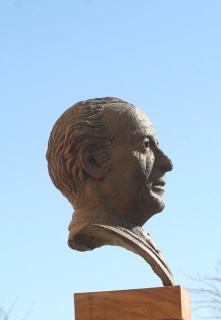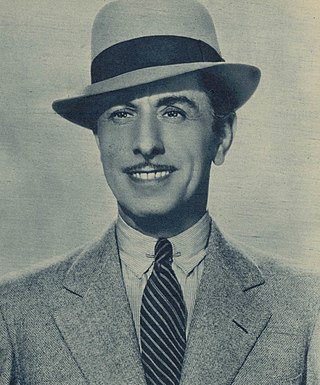
Luis Alcoriza de la Vega was a respected Mexican screenwriter, film director, and actor.
Ana María Campoy was an Argentine actress of Colombian origin. She was born in Bogotá, the child of a couple of actors who had a theatre company in Spain. She began acting at the age of 4, and at 17 she formed her own company.

Luis Bayón Herrera was a Spanish film director and screenwriter who worked in Argentine film of the 1940s and 1950s. He was "one of the most important directors of the golden age of Argentine cinema".

Luis César Amadori was an Italian-Argentine film director and screenwriter and one of the most influential directors in the cinema of Argentina of the classic era. He directed over 60 films between 1936 and 1967, writing the scripts to over 50 pictures.

Roque Funes was the most prolific Argentine cinematographer in the history of the Cinema of Argentina whose career spanned over 40 years of cinema.

Juan de Orduña y Fernández-Shaw was a Spanish film director, screenwriter and actor. Subservient to the ideological tenets and preferences of Francoism, he was one of the regime's standout directors during the autarchy period. Nevertheless, his film "Follow the Legion" has been seen as a disguised story of homosexual love, and de Orduña was a homosexual. He particularly earned recognition for his epic-historicist films, including the extravagant Madness for Love (1948), "an immense commercial success".

Alfredo Fernández Martínez better known as Alfredo Mayo was a Spanish actor.

Manolo Morán was a Spanish film actor.

Antonio León Ortega was a Spanish sculptor known for his Andalusian imagery.
Arturo Soto Rangel was a Mexican film, television, and stage actor. Soto was best known for appearing in over 250 Mexican films. He appeared in one American movie, The Treasure of the Sierra Madre, which won three Academy Awards and starred Humphrey Bogart, Walter Huston, Tim Holt, Bruce Bennett, and many other successful actors. Soto last appeared on television in 1963, where he starred in Voy de gallo.

Jesús Tordesillas Fernández was a Spanish film actor. He appeared in 94 films between 1921 and 1973. He starred in the film Reckless which was entered into the 1951 Cannes Film Festival.

Armando Calvo was a Puerto Rican-born Spanish actor. His father was Juan Calvo Domenech, a Spanish actor and his mother was Minerva Lespier, a Puerto Rican. Calvo worked in Spain, Italy, and Mexico appearing in ninety films between 1939 and 1984.

Martín Garralaga was a Spanish actor who worked in Hollywood from the 1930s through the 1960s. He was married to opera singer and actress Rosa Rey.
Juan José Ortega was a Mexican film director, producer and screenwriter. He was active during the Golden Age of Mexican cinema, and directed over 40 films between 1942 and 1966.
Emilio Tuero Cubillas, known as Emilio Tuero, was a Spanish-Mexican actor, producer, and singer. He was considered a popular star of the Golden Age of Mexican cinema.
Carlos Orellana Martínez was a Mexican actor, film director and screenwriter.

Isabelita Blanch (1906–1985) was a Spanish-born Mexican actress, who specialized in vaudeville and comedy during the Golden Age of Mexican cinema. She and her sister opened several theater companies and performed throughout Mexico and in the US. She also acted in movies and performed in one television series.
Miguel Inclán (1897–1956) was a Mexican film actor. He became known for his villainous roles during the Golden Age of Mexican cinema. His sister was the actress Lupe Inclán.

Manuel Dondé was a Mexican film actor. He frequently played villains during his long film career.
Eduardo Arozamena Lira was a Mexican actor. His nickname was "El Nanche Arozamena".
This page is based on this
Wikipedia article Text is available under the
CC BY-SA 4.0 license; additional terms may apply.
Images, videos and audio are available under their respective licenses.













